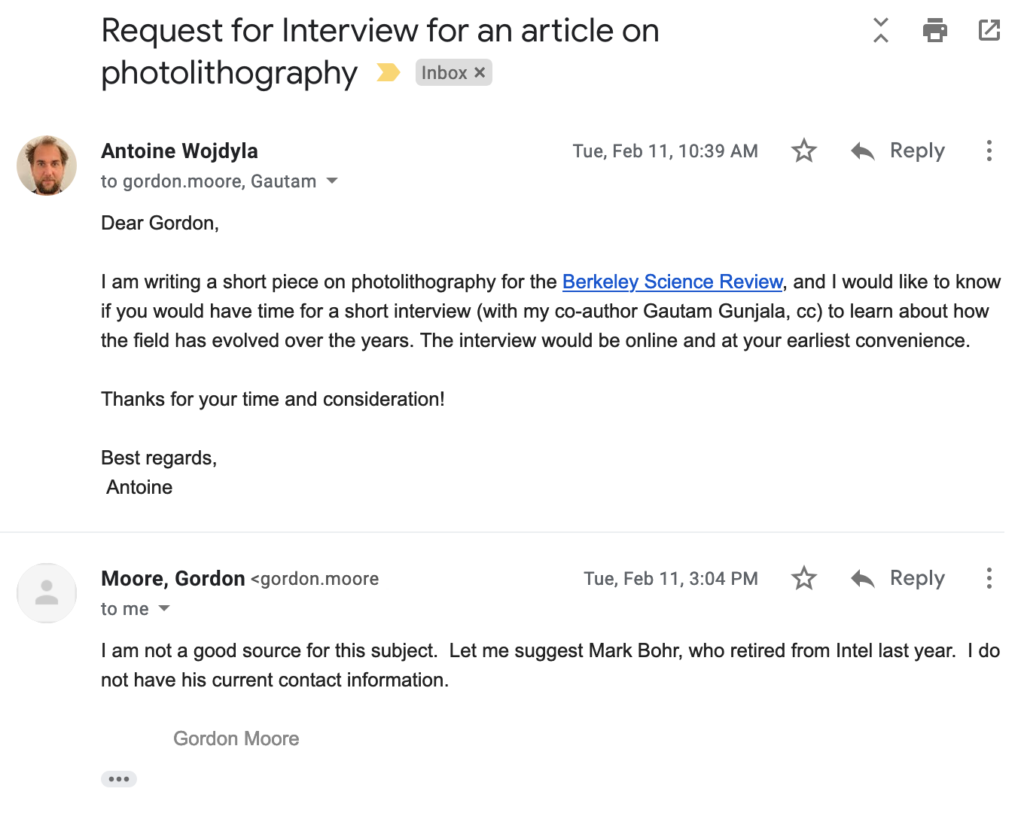Let us represent a dot by a small spot of one metal, the next dash by an adjacent spot of another metal, and so on. Suppose, to be conservative, that a bit of information is going to require a little cube of atoms 5 x 5 x 5 – that is 125 atoms. Perhaps we need a hundred and some odd atoms to make sure that the information is not lost through diffusion, or through some other process.
– Richard Feynman
Spoiler alert: we are nearly there!
* *
These very old line (1959) fro Feynman’s famous speech “There’s Plenty of Room at the Bottom” is still valid, though nowadays are getting very close to the bottom!With my colleague Gautam Gunjala, we published an article in Berkeley Science Review on the ongoing contributions of UC Berkeley and Berkeley Lab to photolithography, the process of making microchips: Room to Shrink.It was supposed to be part of the BSR Issue 38 (Spring 2020) but I guess it got covided.
Here are other pieces from yours truly on the topic:- Moore’s wall, on Moore’s law and why
- SHARP & MET5 – EUV Lithography at Lawrence Berkeley National Laboratory, on the specifics of our contribution to the development of EUV lithography at Berkeley Lab, the upcoming generation in semiconductor manufacturing
Also:
The topic is getting red hot politically:Lawmakers Propose Multibillion Dollar Semiconductor R&D Push (American Institute of Physics, June 24, 2020)if not down right nasty:
Trump administration pressed Dutch hard to cancel China chip-equipment sale: sources (Reuters, January 2, 2020)Trivia: I’ve tried to get an interview from Gordon Moore for the piece, but he respectfully declined…

